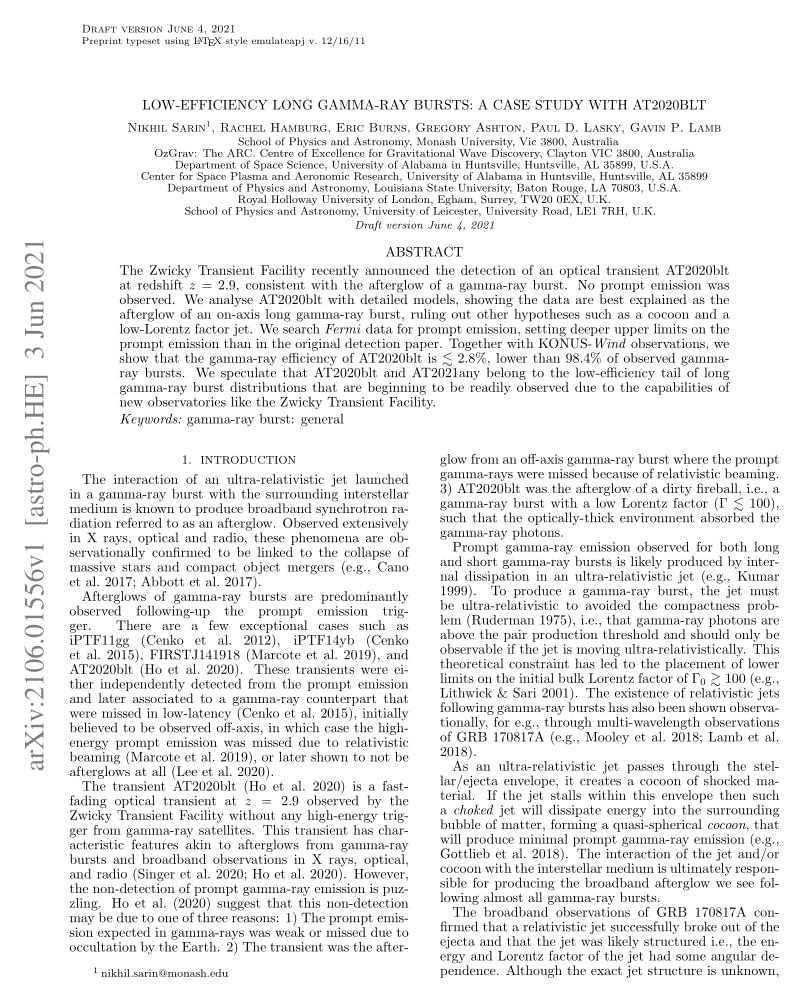The Zwicky Transient Facility recently announced the detection of an optical transient AT2020blt at redshift $z=2.9$, consistent with the afterglow of a gamma-ray burst. No prompt emission was observed. We analyse AT2020blt with detailed models, showing the data are best explained as the afterglow of an on-axis long gamma-ray burst, ruling out other hypotheses such as a cocoon and a low-Lorentz factor jet. We search \textit{Fermi} data for prompt emission, setting deeper upper limits on the prompt emission than in the original detection paper. Together with \konus{} observations, we show that the gamma-ray efficiency of AT2020blt is $\lesssim 2.8\%$, lower than $98.4\%$ of observed gamma-ray bursts. We speculate that AT2020blt and AT2021any belong to the low-efficiency tail of long gamma-ray burst distributions that are beginning to be readily observed due to the capabilities of new observatories like the Zwicky Transient Facility.
